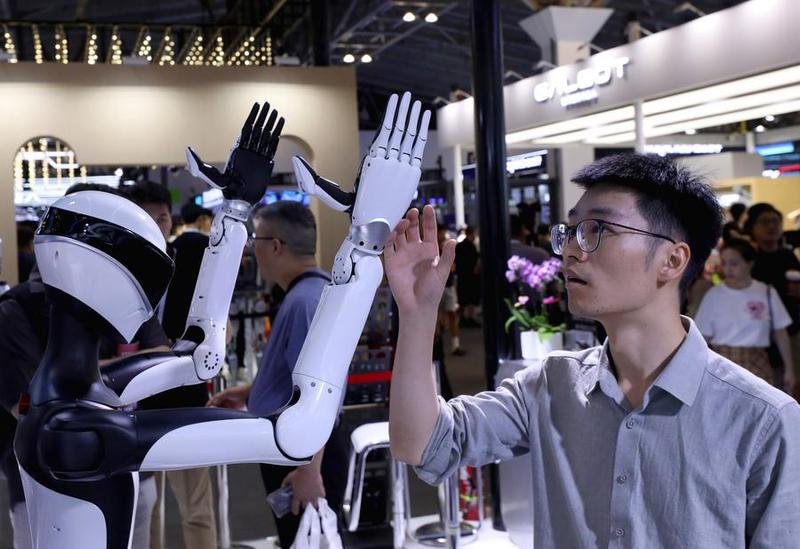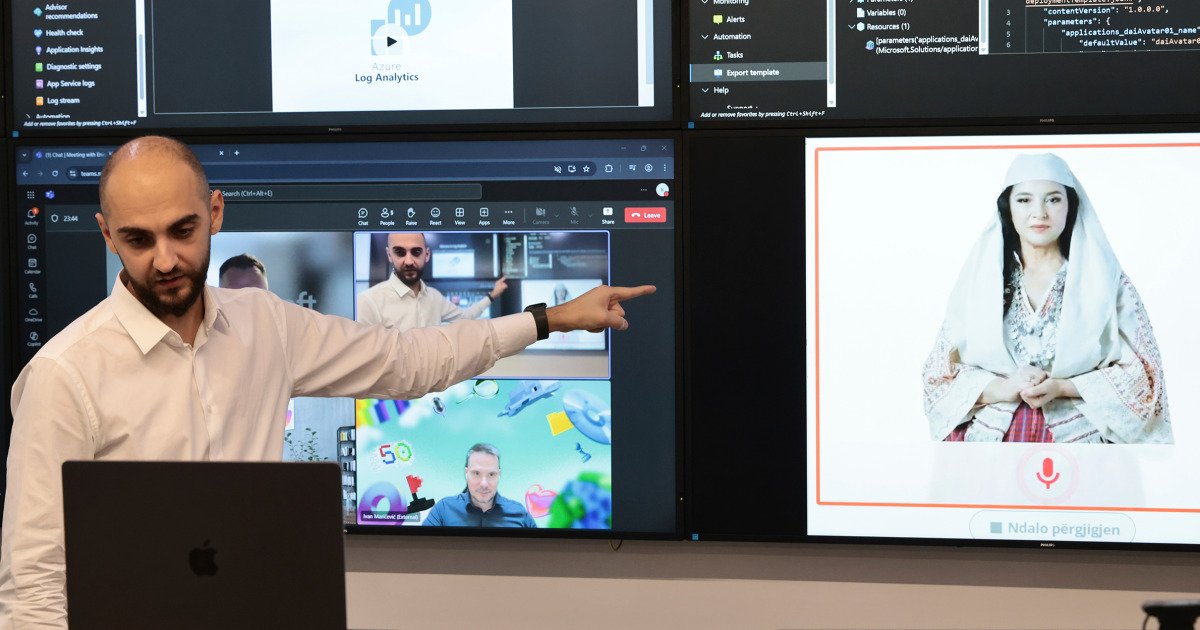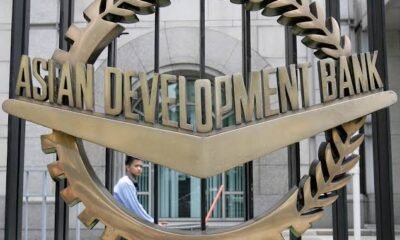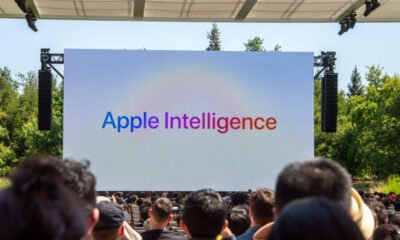AI Research
AI Research Healthcare: Transforming Drug Discovery –

Artificial intelligence (AI) is transforming the pharmaceutical industry. More and more, AI is being used in drug discovery to predict which drugs might work and speed up the whole development process.
But here’s something you probably didn’t see coming: some of the same AI tools that help find new drug candidates are now being used to catch insurance fraud. It’s an innovative cross-industry application that’s essential in protecting the integrity of healthcare systems.
AI’s Core Role in Drug Discovery
The field of drug discovery involves multiple stages, including initial compound screening and preclinical testing to clinical trials and regulatory framework compliance. These steps are time-consuming, expensive, and often risky. Traditional methods can take over a decade and cost billions, and success rates remain frustratingly low. This is where AI-powered drug discovery comes in.
The technology taps machine learning algorithms, deep learning, and advanced analytics so researchers can process vast amounts of molecular and clinical data. As such, pharmaceutical firms and biotech companies can reduce the cost and time required in traditional drug discovery processes.
AI trends in drug discovery cover a broad range of applications, too. For instance, specialized AI platforms for the life sciences are now used to enhance drug discovery workflows, streamline clinical trial analytics, and accelerate regulatory submissions by automating tasks like report reviews and literature screenings. This type of technology demonstrates how machine learning can automatically sift through hundreds of models to identify the optimal one that best fits the data, a process that is far more efficient than manual methods.
In the oncology segment, for example, it’s responsible for innovative precision medicine treatments that target specific genetic mutations in cancer patients. Similar approaches are used in studies for:
- Neurodegenerative diseases
- Cardiovascular diseases
- Chronic diseases
- Metabolic diseases
- Infectious disease segments
Rapid development is critical in such fields, and AI offers great help in making the process more efficient. These applications will likely extend to emerging diseases as AI continues to evolve. Experts even predict that the AI drug discovery market will grow from around USD$1.5 billion in 2023 to between USD$20.30 billion by 2030. Advanced technologies, increased availability of healthcare data, and substantial investments in healthcare technology are the main drivers for its growth.

From Molecules to Fraud Patterns
So, how do AI-assisted drug discovery tools end up playing a role in insurance fraud detection? It’s all about pattern recognition. The AI-based tools used in drug optimization can analyze chemical structures and molecular libraries to find hidden correlations. In the insurance industry, the same capability can scan through patient populations, treatment claims, and medical records to identify suspicious billing or treatment patterns.
The applications in drug discovery often require processing terabytes of data from research institutions, contract research organizations, and pharmaceutical sectors. In fraud detection, the inputs are different—claims data, treatment histories, and reimbursement requests. The analytical methods remain similar, however. Both use unsupervised learning to flag anomalies and predictive analytics to forecast outcomes, whether that’s a promising therapeutic drug or a suspicious claim.
Practical Applications In and Out of the Lab
Let’s break down how this dual application works in real-world scenarios:
- In the lab: AI helps identify small-molecule drugs, perform high-throughput screening, and refine clinical trial designs. Using generation models and computational power, scientists can simulate trial outcomes and optimize patient recruitment strategies, leading to better trial outcomes and fewer delays and ensure drug safety.
- In insurance fraud detection: Advanced analytics can detect billing inconsistencies, unusual prescription patterns, or claims that don’t align with approved therapeutic product development pathways. It protects insurance systems from losing funds that could otherwise support genuine patients and innovative therapies.
This shared analytical backbone creates an environment for innovation that benefits both the pharmaceutical sector and healthcare insurers.
Challenges and Future Outlook
The integration of AI in drug discovery and insurance fraud detection is promising, but it comes with challenges. Patient data privacy, for instance, is a major concern for both applications, whether it’s clinical trial information or insurance claims data. The regulatory framework around healthcare data is constantly changing, and companies need to stay compliant across both pharmaceutical and insurance sectors.
On the fraud detection side, AI systems need to balance catching real fraud without flagging legitimate claims. False positives can delay patient care and create administrative headaches. Also, fraudsters are getting more sophisticated, so detection algorithms need constant updates to stay ahead.
Despite these hurdles, the market growth for these integrated solutions is expected to outpace other applications due to their dual benefits. With rising healthcare costs and more complex fraud schemes, insurance companies are under increasing pressure to protect their systems while still covering legitimate treatments.
Looking ahead, AI-driven fraud detection is likely to become more sophisticated as it learns from drug discovery patterns. And as healthcare fraud becomes more complex and treatment options expand, we can expect these cross-industry AI solutions to play an even bigger role in protecting healthcare dollars.
Final Thoughts
The crossover between AI drug discovery tools and insurance fraud detection shows how pattern recognition technology can solve problems across different industries. What started as a way to find new medicines is now helping catch fraudulent claims and protect healthcare dollars.
For patients, this dual approach means both faster access to new treatments and better protection of the insurance systems that help pay for their care. For the industry, it’s about getting more value from AI investments; the same technology that helps develop drugs can also stop fraud from draining resources. It’s a smart example of how one innovation can strengthen healthcare from multiple angles.
Related
AI Research
UK workers wary of AI despite Starmer’s push to increase uptake, survey finds | Artificial intelligence (AI)

It is the work shortcut that dare not speak its name. A third of people do not tell their bosses about their use of AI tools amid fears their ability will be questioned if they do.
Research for the Guardian has revealed that only 13% of UK adults openly discuss their use of AI with senior staff at work and close to half think of it as a tool to help people who are not very good at their jobs to get by.
Amid widespread predictions that many workers face a fight for their jobs with AI, polling by Ipsos found that among more than 1,500 British workers aged 16 to 75, 33% said they did not discuss their use of AI to help them at work with bosses or other more senior colleagues. They were less coy with people at the same level, but a quarter of people believe “co-workers will question my ability to perform my role if I share how I use AI”.
The Guardian’s survey also uncovered deep worries about the advance of AI, with more than half of those surveyed believing it threatens the social structure. The number of people believing it has a positive effect is outweighed by those who think it does not. It also found 63% of people do not believe AI is a good substitute for human interaction, while 17% think it is.
Next week’s state visit to the UK by Donald Trump is expected to signal greater collaboration between the UK and Silicon Valley to make Britain an important centre of AI development.
The US president is expected to be joined by Sam Altman, the co-founder of OpenAI who has signed a memorandum of understanding with the UK government to explore the deployment of advanced AI models in areas including justice, security and education. Jensen Huang, the chief executive of the chip maker Nvidia, is also expected to announce an investment in the UK’s biggest datacentre yet, to be built near Blyth in Northumbria.
Keir Starmer has said he wants to “mainline AI into the veins” of the UK. Silicon Valley companies are aggressively marketing their AI systems as capable of cutting grunt work and liberating creativity.
The polling appears to reflect workers’ uncertainty about how bosses want AI tools to be used, with many employers not offering clear guidance. There is also fear of stigma among colleagues if workers are seen to rely too heavily on the bots.
A separate US study circulated this week found that medical doctors who use AI in decision-making are viewed by their peers as significantly less capable. Ironically, the doctors who took part in the research by Johns Hopkins Carey Business School recognised AI as beneficial for enhancing precision, but took a negative view when others were using it.
Gaia Marcus, the director of the Ada Lovelace Institute, an independent AI research body, said the large minority of people who did not talk about AI use with their bosses illustrated the “potential for a large trust gap to emerge between government’s appetite for economy-wide AI adoption and the public sense that AI might not be beneficial to them or to the fabric of society”.
“We need more evaluation of the impact of using these tools, not just in the lab but in people’s everyday lives and workflows,” she said. “To my knowledge, we haven’t seen any compelling evidence that the spread of these generative AI tools is significantly increasing productivity yet. Everything we are seeing suggests the need for humans to remain in the driving seat with the tools we use.”
after newsletter promotion
A study by the Henley Business School in May found 49% of workers reported there were no formal guidelines for AI use in their workplace and more than a quarter felt their employer did not offer enough support.
Prof Keiichi Nakata at the school said people were more comfortable about being transparent in their use of AI than 12 months earlier but “there are still some elements of AI shaming and some stigma associated with AI”.
He said: “Psychologically, if you are confident with your work and your expertise you can confidently talk about your engagement with AI, whereas if you feel it might be doing a better job than you are or you feel that you will be judged as not good enough or worse than AI, you might try to hide that or avoid talking about it.”
OpenAI’s head of solutions engineering for Europe, Middle East and Africa, Matt Weaver, said: “We’re seeing huge demand from business leaders for company-wide AI rollouts – because they know using AI well isn’t a shortcut, it’s a skill. Leaders see the gains in productivity and knowledge sharing and want to make that available to everyone.”
AI Research
What is artificial intelligence’s greatest risk? – Opinion

Risk dominates current discussions on AI governance. This July, Geoffrey Hinton, a Nobel and Turing laureate, addressed the World Artificial Intelligence Conference in Shanghai. His speech bore the title he has used almost exclusively since leaving Google in 2023: “Will Digital Intelligence Replace Biological Intelligence?” He stressed, once again, that AI might soon surpass humanity and threaten our survival.
Scientists and policymakers from China, the United States, European countries and elsewhere, nodded gravely in response. Yet this apparent consensus masks a profound paradox in AI governance. Conference after conference, the world’s brightest minds have identified shared risks. They call for cooperation, sign declarations, then watch the world return to fierce competition the moment the panels end.
This paradox troubled me for years. I trust science, but if the threat is truly existential, why can’t even survival unite humanity? Only recently did I grasp a disturbing possibility: these risk warnings fail to foster international cooperation because defining AI risk has itself become a new arena for international competition.
Traditionally, technology governance follows a clear causal chain: identify specific risks, then develop governance solutions. Nuclear weapons pose stark, objective dangers: blast yield, radiation, fallout. Climate change offers measurable indicators and an increasingly solid scientific consensus. AI, by contrast, is a blank canvas. No one can definitively convince everyone whether the greatest risk is mass unemployment, algorithmic discrimination, superintelligent takeover, or something entirely different that we have not even heard of.
This uncertainty transforms AI risk assessment from scientific inquiry into strategic gamesmanship. The US emphasizes “existential risks” from “frontier models”, terminology that spotlights Silicon Valley’s advanced systems.
This framework positions American tech giants as both sources of danger and essential partners in control. Europe focuses on “ethics” and “trustworthy AI”, extending its regulatory expertise from data protection into artificial intelligence. China advocates that “AI safety is a global public good”, arguing that risk governance should not be monopolized by a few nations but serve humanity’s common interests, a narrative that challenges Western dominance while calling for multipolar governance.
Corporate actors prove equally adept at shaping risk narratives. OpenAI’s emphasis on “alignment with human goals” highlights both genuine technical challenges and the company’s particular research strengths. Anthropic promotes “constitutional AI” in domains where it claims special expertise. Other firms excel at selecting safety benchmarks that favor their approaches, while suggesting the real risks lie with competitors who fail to meet these standards. Computer scientists, philosophers, economists, each professional community shapes its own value through narrative, warning of technical catastrophe, revealing moral hazards, or predicting labor market upheaval.
The causal chain of AI safety has thus been inverted: we construct risk narratives first, then deduce technical threats; we design governance frameworks first, then define the problems requiring governance. Defining the problem creates causality. This is not epistemological failure but a new form of power, namely making your risk definition the unquestioned “scientific consensus”. For how we define “artificial general intelligence”, which applications constitute “unacceptable risk”, what counts as “responsible AI”, answers to all these questions will directly shape future technological trajectories, industrial competitive advantages, international market structures, and even the world order itself.
Does this mean AI safety cooperation is doomed to empty talk? Quite the opposite. Understanding the rules of the game enables better participation.
AI risk is constructed. For policymakers, this means advancing your agenda in international negotiations while understanding the genuine concerns and legitimate interests behind others’.
Acknowledging construction doesn’t mean denying reality, regardless of how risks are defined, solid technical research, robust contingency mechanisms, and practical safeguards remain essential. For businesses, this means considering multiple stakeholders when shaping technical standards and avoiding winner-takes-all thinking.
True competitive advantage stems from unique strengths rooted in local innovation ecosystems, not opportunistic positioning. For the public, this means developing “risk immunity”, learning to discern the interest structures and power relations behind different AI risk narratives, neither paralyzed by doomsday prophecies nor seduced by technological utopias.
International cooperation remains indispensable, but we must rethink its nature and possibilities. Rather than pursuing a unified AI risk governance framework, a consensus that is neither achievable nor necessary, we should acknowledge and manage the plurality of risk perceptions. The international community needs not one comprehensive global agreement superseding all others, but “competitive governance laboratories” where different governance models prove their worth in practice. This polycentric governance may appear loose but can achieve higher-order coordination through mutual learning and checks and balances.
We habitually view AI as another technology requiring governance, without realizing it is changing the meaning of “governance” itself. The competition to define AI risk isn’t global governance’s failure but its necessary evolution: a collective learning process for confronting the uncertainties of transformative technology.
The author is an associate professor at the Center for International Security and Strategy, Tsinghua University.
The views don’t necessarily represent those of China Daily.
If you have a specific expertise, or would like to share your thought about our stories, then send us your writings at opinion@chinadaily.com.cn, and comment@chinadaily.com.cn.
AI Research
Albania’s prime minister appoints an AI-generated ‘minister’ to tackle corruption

TIRANA, Albania — Albania’s prime minister on Friday tapped an Artificial Intelligence-generated “minister” to tackle corruption and promote transparency and innovation in his new Cabinet.
Officially named Diella — the female form of the word for sun in the Albanian language — the new AI minister is a virtual entity.
Diella will be a “member of the Cabinet who is not present physically but has been created virtually,” Prime Minister Edi Rama said in a post on Facebook.
Rama said the AI-generated bot would help ensure that “public tenders will be 100% free of corruption” and will help the government work faster and with full transparency.
Diella uses AI’s up-to-date models and techniques to guarantee accuracy in offering the duties it is charged with, according to Albania’s National Agency for Information Society’s website.
Diella, depicted as a figure in a traditional Albanian folk costume, was created earlier this year, in cooperation with Microsoft, as a virtual assistant on the e-Albania public service platform, where she has helped users navigate the site and get access to about 1 million digital inquiries and documents.
Rama’s Socialist Party secured a fourth consecutive term after winning 83 of the 140 Assembly seats in the May 11 parliamentary elections. The party can govern alone and pass most legislation, but it needs a two-thirds majority, or 93 seats, to change the Constitution.
The Socialists have said it can deliver European Union membership for Albania in five years, with negotiations concluding by 2027. The pledge has been met with skepticism by the Democrats, who contend Albania is far from prepared.
The Western Balkan country opened full negotiations to join the EU a year ago. The new government also faces the challenges of fighting organized crime and corruption, which has remained a top issue in Albania since the fall of the communist regime in 1990.
Diella also will help local authorities to speed up and adapt to the bloc’s working trend.
Albanian President Bajram Begaj has mandated Rama with the formation of the new government. Analysts say that gives the prime minister authority “for the creation and functioning” of AI-generated Diella.
Asked by journalists whether that violates the constitution, Begaj stopped short on Friday of describing Diella’s role as a ministerial post.
The conservative opposition Democratic Party-led coalition, headed by former prime minister and president Sali Berisha, won 50 seats. The party has not accepted the official election results, claiming irregularities, but its members participated in the new parliament’s inaugural session. The remaining seats went to four smaller parties.
Lawmakers will vote on the new Cabinet but it was unclear whether Rama will ask for a vote on Diella’s virtual post. Legal experts say more work may be needed to establish Diella’s official status.
The Democrats’ parliamentary group leader Gazmend Bardhi said he considered Diella’s ministerial status unconstitutional.
“Prime minister’s buffoonery cannot be turned into legal acts of the Albanian state,” Bardhi posted on Facebook.
Parliament began the process on Friday to swear in the new lawmakers, who will later elect a new speaker and deputies and formally present Rama’s new Cabinet.
-

 Business2 weeks ago
Business2 weeks agoThe Guardian view on Trump and the Fed: independence is no substitute for accountability | Editorial
-
Tools & Platforms1 month ago
Building Trust in Military AI Starts with Opening the Black Box – War on the Rocks
-

 Ethics & Policy2 months ago
Ethics & Policy2 months agoSDAIA Supports Saudi Arabia’s Leadership in Shaping Global AI Ethics, Policy, and Research – وكالة الأنباء السعودية
-

 Events & Conferences4 months ago
Events & Conferences4 months agoJourney to 1000 models: Scaling Instagram’s recommendation system
-

 Jobs & Careers2 months ago
Jobs & Careers2 months agoMumbai-based Perplexity Alternative Has 60k+ Users Without Funding
-

 Podcasts & Talks2 months ago
Podcasts & Talks2 months agoHappy 4th of July! 🎆 Made with Veo 3 in Gemini
-

 Education2 months ago
Education2 months agoMacron says UK and France have duty to tackle illegal migration ‘with humanity, solidarity and firmness’ – UK politics live | Politics
-

 Education2 months ago
Education2 months agoVEX Robotics launches AI-powered classroom robotics system
-

 Podcasts & Talks2 months ago
Podcasts & Talks2 months agoOpenAI 🤝 @teamganassi
-

 Funding & Business2 months ago
Funding & Business2 months agoKayak and Expedia race to build AI travel agents that turn social posts into itineraries
















